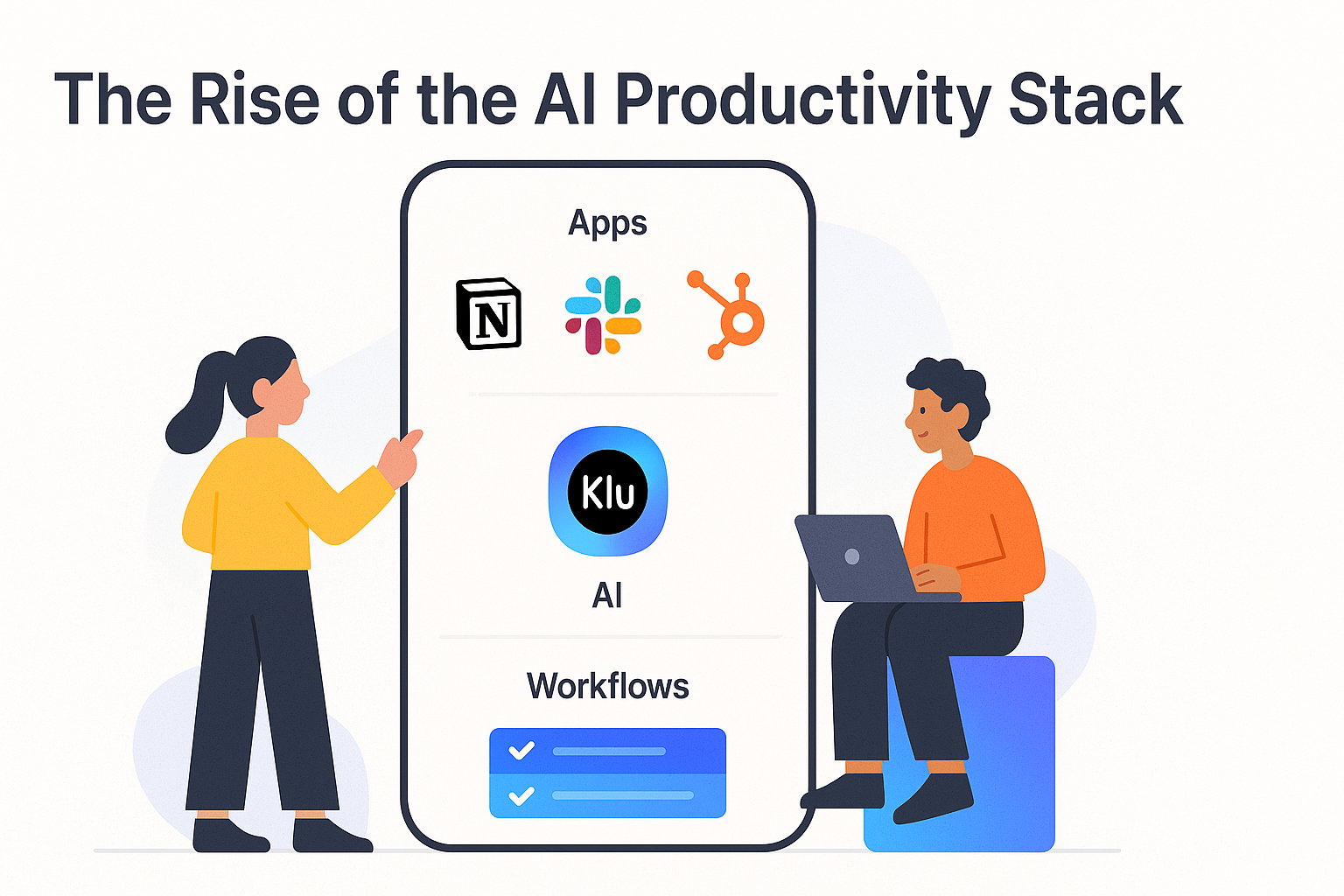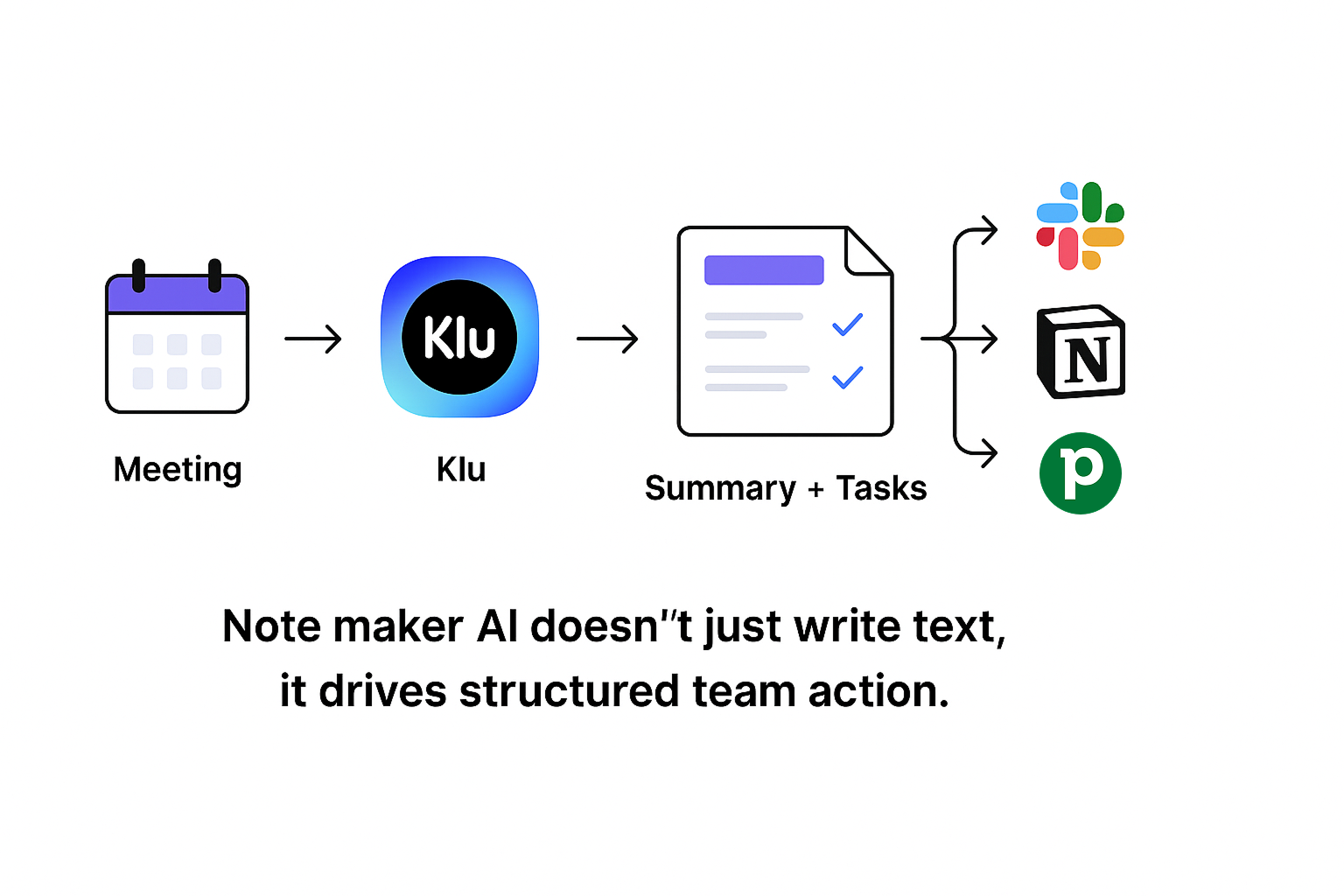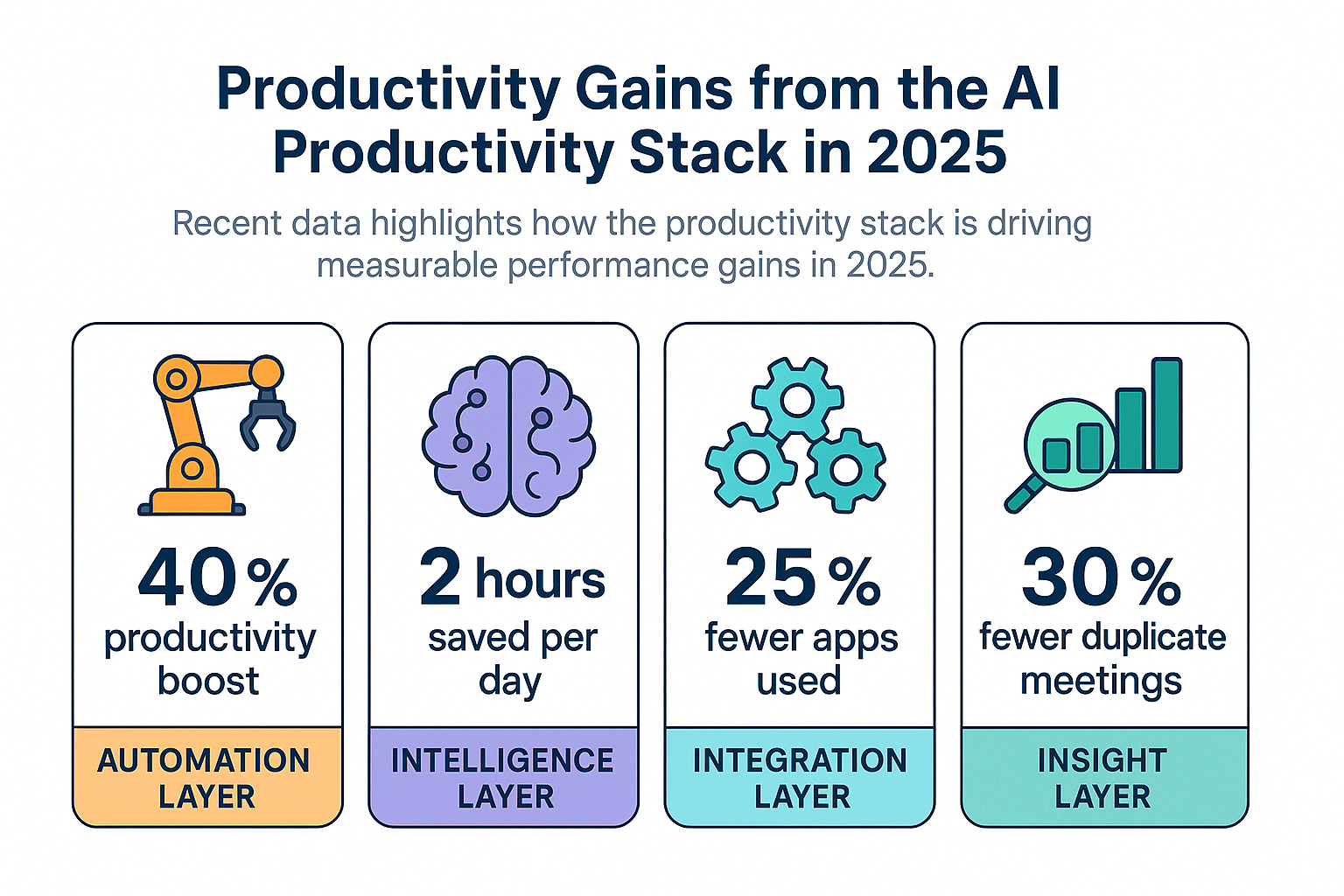 Sami AZ
Sami AZ
In 2025, work has reached a new level of complexity. Teams are stretched between endless collaboration and the constant pressure to produce faster results. The digital workplace is evolving from individual tools to intelligent systems that coordinate everything automatically. At the center of this shift sits a new concept: the AI productivity stack.
The AI productivity stack is more than just software. It is a framework for how work actually gets done in the modern enterprise. It connects automation, intelligence, and integration across all layers of an organization. When implemented correctly, it does not just make teams faster—it fundamentally changes how they think, communicate, and execute.
This article explores what the AI productivity stack really means, why it matters in 2025, how its layers function together, and where Klu fits in as the system that unites it all.
The AI productivity stack is the new digital operating system of modern work. It consists of interconnected layers that transform how tasks move from conversation to completion. The stack contains four primary components:
Recent global surveys show that AI adoption has exploded since 2022, yet most companies remain at an early stage. Fewer than 5 percent of enterprises have fully built integrated AI workflows. That means the competitive advantage still belongs to the organizations building full systems—not just experimenting with tools.
The modern worker is overwhelmed. Meeting fatigue, fragmented tools, and manual follow-ups consume hours every week. Leaders say productivity must rise, yet employees report they lack time, clarity, and focus.
The AI productivity stack solves this by aligning technology with workflow. It helps teams reclaim time in three key ways:
Imagine a sales team that automates call summaries and task creation. If each rep saves 2 hours per day, the cumulative effect is massive. Across departments, this becomes entire workdays regained every week.
For a closer look at how communication efficiency drives real results, explore our article on Smarter Meetings in 2025.
The first layer focuses on reducing human effort in routine processes. This includes scheduling meetings, generating follow-ups, and updating project systems. In most companies, these tasks still require manual input. Automation transforms them into invisible workflows that happen in the background.
Teams using automation consistently report saving multiple hours each week simply by automating admin work. Over time, these micro-savings compound into entire workdays gained per month.
The intelligence layer builds on automation by introducing understanding and context. AI summarization tools capture meetings, identify key decisions, and recommend next steps. Instead of rereading notes or searching through transcripts, teams can act immediately.
This layer is where clarity and knowledge meet speed. Leaders who use AI consistently report higher productivity, better focus, and more accurate decision-making.
To see how AI creates context and meaning from unstructured conversation, read our post on Objective Summaries: How AI Creates Context That Matters.
The third layer ensures the intelligence flows into the systems teams already use. Without integration, data becomes fragmented across apps. A true stack allows tasks generated in meetings to appear instantly in project boards or CRMs.
For example, when an action item is mentioned in a meeting, the system automatically creates a task in Notion or HubSpot, assigns ownership, and sets a due date. That is integration in motion.
The same principle applies in AI for Project Management: Smarter Meetings, Smarter Teams, where workflows move seamlessly from meeting discussion to tracked project progress.
The top layer focuses on understanding results. This includes dashboards, analytics, and AI-generated insights that show what is working, what is slowing teams down, and where optimization is possible.
When combined, these layers form a feedback loop that continuously improves productivity. AI measures meeting outcomes, task completion rates, and follow-through, then refines workflows automatically.

Despite clear benefits, many organizations fail to operationalize the AI productivity stack. The reasons are surprisingly consistent:
As a result, many teams experience “tool fatigue.” Employees use more apps than ever but spend more time managing them. A real productivity stack does the opposite, it consolidates and orchestrates rather than fragments.
Training and change management are equally critical. In most enterprises, the gap between tool usage and true understanding is wide. Teams need structured onboarding and measurement to ensure adoption turns into impact.
Klu was designed to operate as the connective tissue of the modern productivity stack. It does not sit on the sidelines of your workflow, it powers it from the center.
By sitting across every layer of the productivity stack, Klu transforms the way teams collaborate. It replaces manual work with intelligence and connects the dots between meetings, tasks, and measurable results.

Companies that successfully implement the full stack consistently outperform peers. In sectors like software, consulting, and sales, teams using AI-enabled automation report double-digit efficiency improvements. Developers report saving more than 10 hours per week by automating documentation, and project managers note 25 percent faster delivery times when meeting insights feed directly into execution systems.
When the stack functions end-to-end, it reduces manual friction, eliminates communication gaps, and increases accountability. Data flows seamlessly between conversations and outcomes. Teams no longer ask “what did we decide?” because everything is captured and tracked automatically.
The productivity stack also delivers qualitative gains, more focus, fewer interruptions, and higher engagement. Employees feel more in control because repetitive coordination no longer dominates their day.
Building your stack is not about buying more software; it is about architecting your workflow around automation, intelligence, and measurement. Follow these steps to get started:
The key is iteration. Teams that monitor and optimize their workflow see the most sustained benefits. Within a few months, the compounding effect of consistent automation yields measurable results.
What is an AI productivity stack?
It is a structured system combining automation, intelligence, integration, and analytics to turn everyday work into coordinated, data-driven action.
Why is it different from regular productivity tools?
Traditional tools handle isolated tasks. The AI productivity stack connects everything, from communication to follow-up, so decisions automatically generate progress.
How much time can teams save?
Most teams implementing full stack automation report reclaiming 8–12 hours per week per person. Savings scale with meeting frequency and workflow complexity.
Is one AI app enough?
No. A single app may automate one part of your process, but the productivity stack integrates multiple layers into one continuous workflow.
Where does Klu fit?
Klu operates across the entire stack. It automates meeting capture, generates insights, integrates with your workspace tools, and tracks outcomes. It is the control center that moves work from conversation to completion.
The AI productivity stack is no longer a theory; it is the new architecture of modern work. It connects automation, insight, and integration into a single, intelligent system that transforms how teams operate.
Many companies are still stuck testing tools in isolation. The real gains appear when teams connect everything, when the meeting becomes the start of action, not the end of discussion. That is where Klu comes in.
By embedding automation across meetings, adding AI-driven intelligence, and integrating with daily tools, Klu completes the productivity stack. It eliminates wasted time, strengthens collaboration, and ensures every decision turns into measurable impact.
In 2025, productivity is no longer about working harder, it is about building smarter systems that do the work for you. The organizations that understand this and invest in the AI productivity stack today will own the competitive advantage tomorrow.
Ready to move beyond transcription? Try Klu Free.